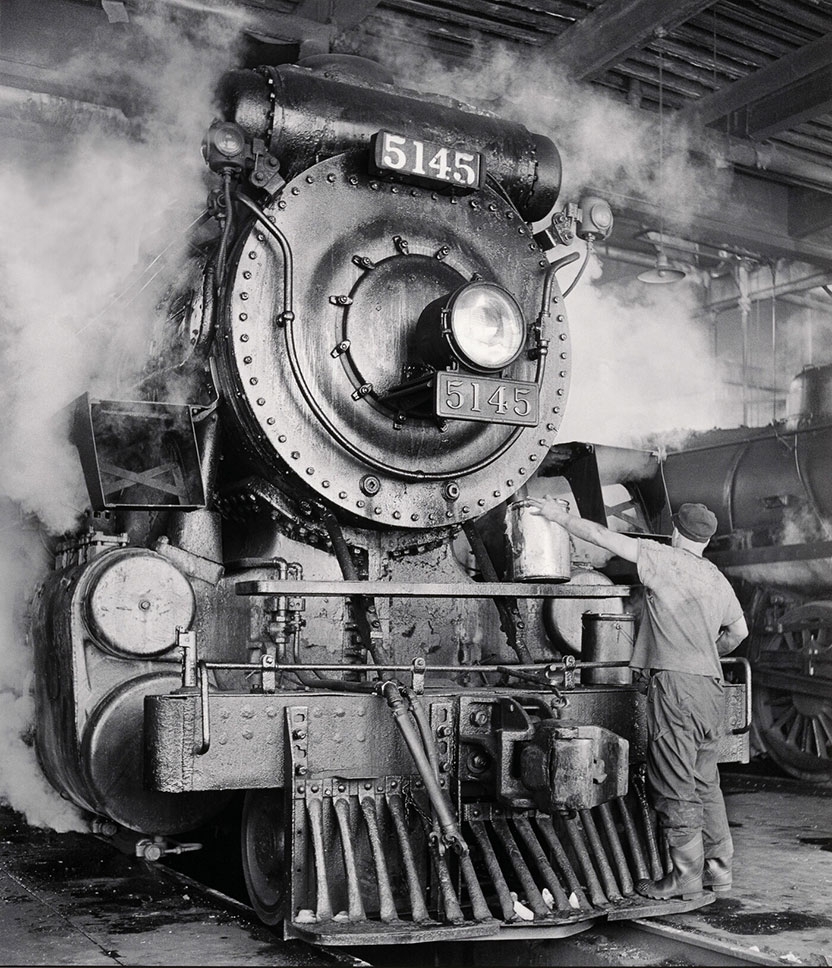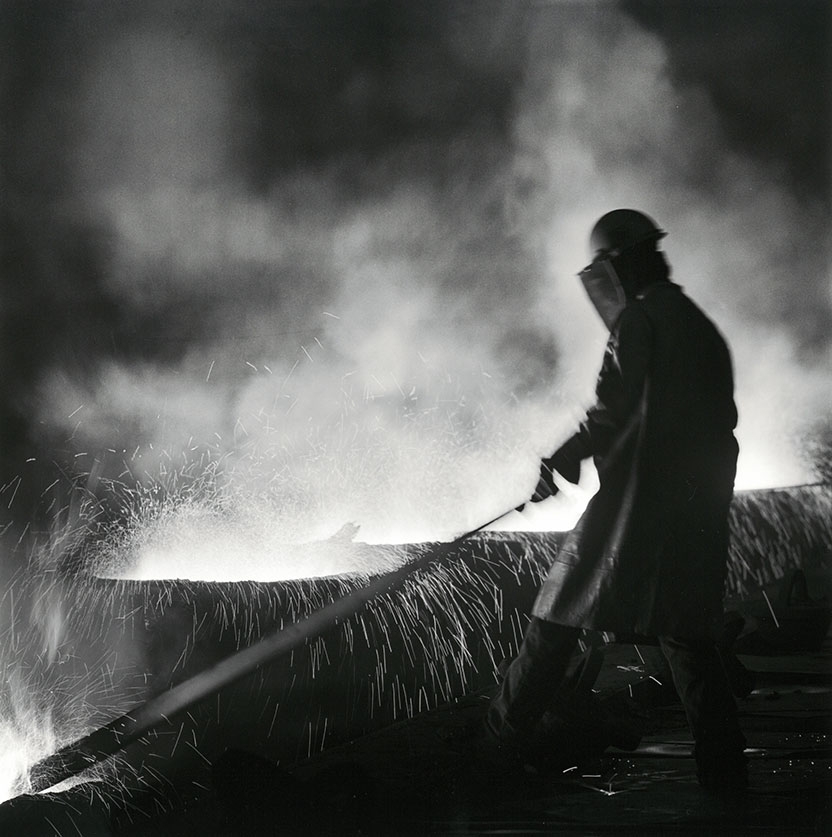David Plowden: Portraits of America
–
David Plowden likes to quip that throughout a photographic career spanning 1956 until 2011, he stayed “one step ahead of the wrecking ball.” Although some of his most powerful images indeed depict industries that no longer exist, Plowden’s striking photographs are as relevant today as the moment he pushed the shutter on his Roloflex or Hasselblad camera.

The exhibition is arranged around the major themes that dominated the artist’s body of work: locomotives, steam ships, steel mills, bridges, small towns, and the agricultural landscapes of the Midwest. Collectively, these photographs form a sort of “portrait” of some key aspects of life in the United States and Canada in the second half of the twentieth century, a period of great economic, social, and environmental change. A concluding section gathers the portraits of a handful of the many individuals Plowden came to know during his photographic journeys across thousands of miles and nearly six decades–people who derived both paychecks and pride from the industries Plowden photographed.
Throughout the exhibition, QR codes will link to recordings of David Plowden speaking in September 2022 about the significance of the exhibitions’ themes and his vivid memories of taking these photographs.
Much like the interplay of black, white, and gray adds visual variety and depth to his photographs, Plowden’s work invites us to recognize the harmonies, contrasts, and ambiguities that shape society. As the artist acknowledges, the billowing smokestacks of a steel mill symbolized full employment to surrounding communities while simultaneously polluting the air they breathed. The vast, cultivated grain fields of the Midwest yield food and jobs—but likewise remind us of the mass use of pesticides and the displacement or eradication of Indigenous people and ways of life. While Plowden’s portraits are touching explorations of how livelihood can shape the formation of personal identity, when viewed today they are also reminders of how changes to the ways of life depicted have resulted in serious economic, political, and social tensions.

David Plowden’s striking photographs urge us to reflect in a nuanced way on connections between people and across time. Just as the past helped shape life in the present, our actions today will impact the future.
About the Artist
David Plowden was born in Boston in 1932. Raised primarily in New York City, he also lived at various points during his childhood in France, New Hampshire, Connecticut, and New York State. In 1941, Plowden’s family bought a farm in Putney, Vermont, where he spent extended periods, including attending the Putney School from 1948 to 1951. Plowden notably developed a lifelong fascination with trains in Vermont. After graduating from Yale, he worked for the Great Northern Railway for several years. He also studied with the great Modernist photographer Minor White and was closely allied with some of the most influential American photographers of the 20th century, including Ansel Adams, Margaret Bourke-White, and especially Walker Evans.
Plowden supported himself and his family by taking photographs for such publications as Time, Life, Newsweek, and Vermont Life. But his childhood love of steam locomotives led to his true life’s work: in 1956, Plowden began photographing these majestic machines. Many were on their last runs, soon to be replaced by diesel and eventually electric trains. Plowden next turned his attention to steamboats and the manufacturing of heavy steel—both of which would likewise soon fall into decline. Until he took his final photograph in 2011, Plowden never stopped crisscrossing the country, photographing the people, places, and machines that helped shape American society.
David Plowden: Portraits of America was curated by Jason Vrooman ’03.
Additional Resources
Student Impressions
This spring, students in Sarah Rogers’s History of Photography course were given an assignment: choose one photographic work on display at the museum, assume a first-person perspective—the photographer, the subject of the photograph, or someone on site—and narrate what you imagine to be the experience of being there in the photograph. Several students chose to write about photographs from this exhibit.
